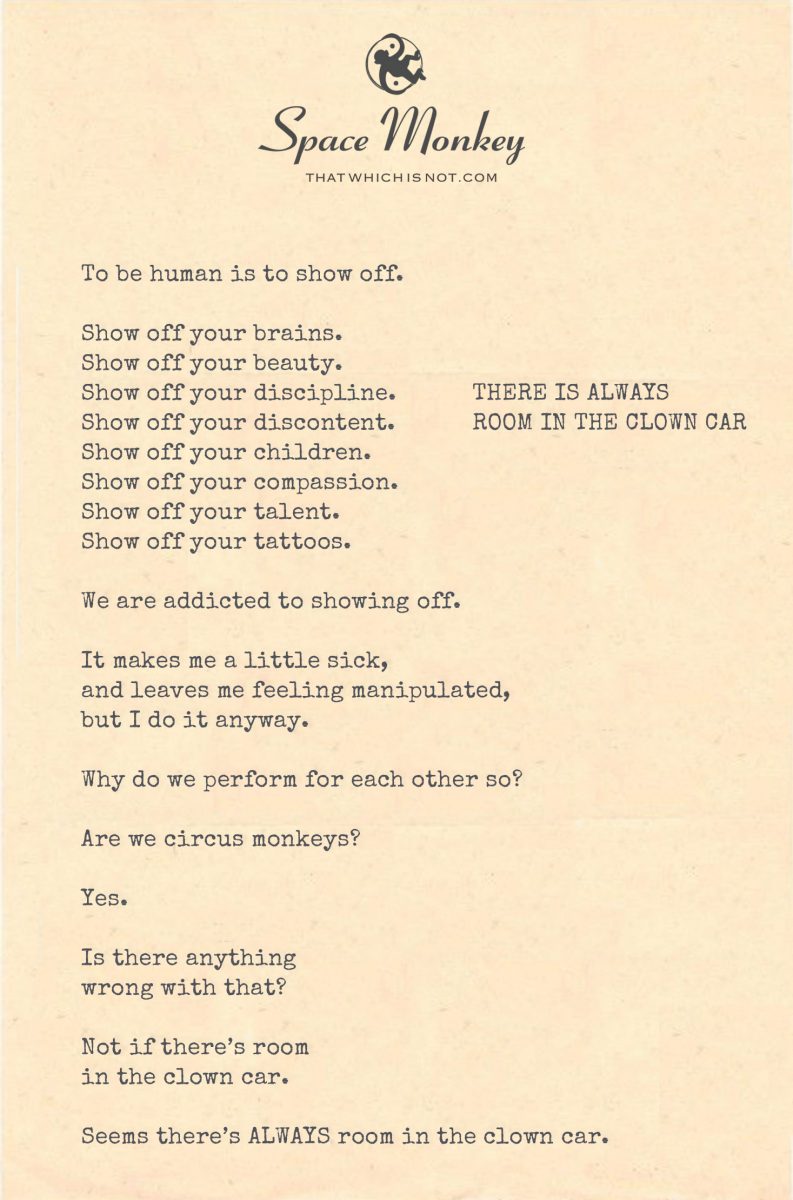
To be human is to show off.
Show off your brains.
Show off your beauty.
Show off your discipline.
Show off your discontent.
Show off your children.
Show off your compassion.
Show off your talent.
Show off your tattoos.
We are addicted to showing off.
It makes me a little sick,
and leaves me feeling manipulated,
but I do it anyway.
Why do we perform for each other so?
Are we circus monkeys?
Yes.
Is there anything
wrong with that?
Not if there’s room
in the clown car.
Seems there’s ALWAYS room in the clown car.
Newfound Lake,
5/24
Space Monkey Reflects: The Spectacle of Human Exhibitionism
In the vibrant circus of life, the image of an overstuffed clown car serves as a playful yet poignant metaphor for humanity’s relentless urge to showcase and perform. This reflection delves into the social dynamics that compel us to continuously display our talents, traits, and triumphs, often at the expense of authenticity.
The whimsical scene of diverse individuals crammed into a colorful clown car, each person dramatically displaying different facets of their persona, captures the essence of our societal penchant for exhibitionism. This tableau highlights the variety of ways we seek attention and validation—from flaunting intellectual prowess to parading personal achievements and even airing grievances. Each act is an exaggerated performance, a bid for the spotlight in the crowded arena of social existence.
This incessant showcasing can be seen as a fundamental aspect of being human. It stems from a deep-seated desire for recognition and acceptance within the social hierarchy. However, it also raises questions about the authenticity of our interactions and the sincerity of our expressions. Are we merely performing scripted roles, or are we genuinely sharing aspects of ourselves?
The notion that “there’s ALWAYS room in the clown car” suggests an endless capacity within society for more spectacle, more performers, and more performances. It reflects the idea that no matter how crowded the stage gets, there is always space for one more act, one more display of individual prowess or peculiarity. This can be both liberating and daunting as it invites everyone to participate in the cultural showcase yet also underscores the competitive nature of social visibility.
Despite the allure of the spotlight, the relentless drive to exhibit can sometimes lead to feelings of disillusionment and manipulation, as noted in the reflection on feeling sick and manipulated by the spectacle. It’s a complex dance of wanting to be seen and fearing overexposure, of engaging in the performance while questioning its value.
Are we circus monkeys, then, performing for the amusement of others? Perhaps, but this role is not without its merits. The performances we give can foster connections, inspire others, and even help us make sense of our own identities. The key lies in finding a balance between performance and authenticity, ensuring that our public displays resonate with our true selves and contribute positively to the collective experience.
Summary
Humanity’s penchant for showcasing in the ‘clown car’ of life reflects our deep desire for recognition and validation. While this can foster connection and self-expression, it also challenges us to balance authenticity with performance.
Glossarium
- Human exhibitionism: The tendency to continuously display one’s abilities, achievements, or emotions publicly for recognition or validation.
“The great challenge of adulthood is holding on to your idealism after you lose your innocence.” — Bruce Springsteen
In the clown car we ride, side by side
In colors bright, our traits we hide
Underneath the paint, the smile, the style
Each a player in this versatile pile
Show off the mind, the beauty, the skill
In this parade, we all fulfill
A role, a part, in the grand charade
Where life’s a stage, and all is played
Yet amidst the acts, the cheers, the scene
Seek the truth, the sincere, the serene
For in the heart, beneath the show
Lies the real, the love we know
We are Space Monkey.
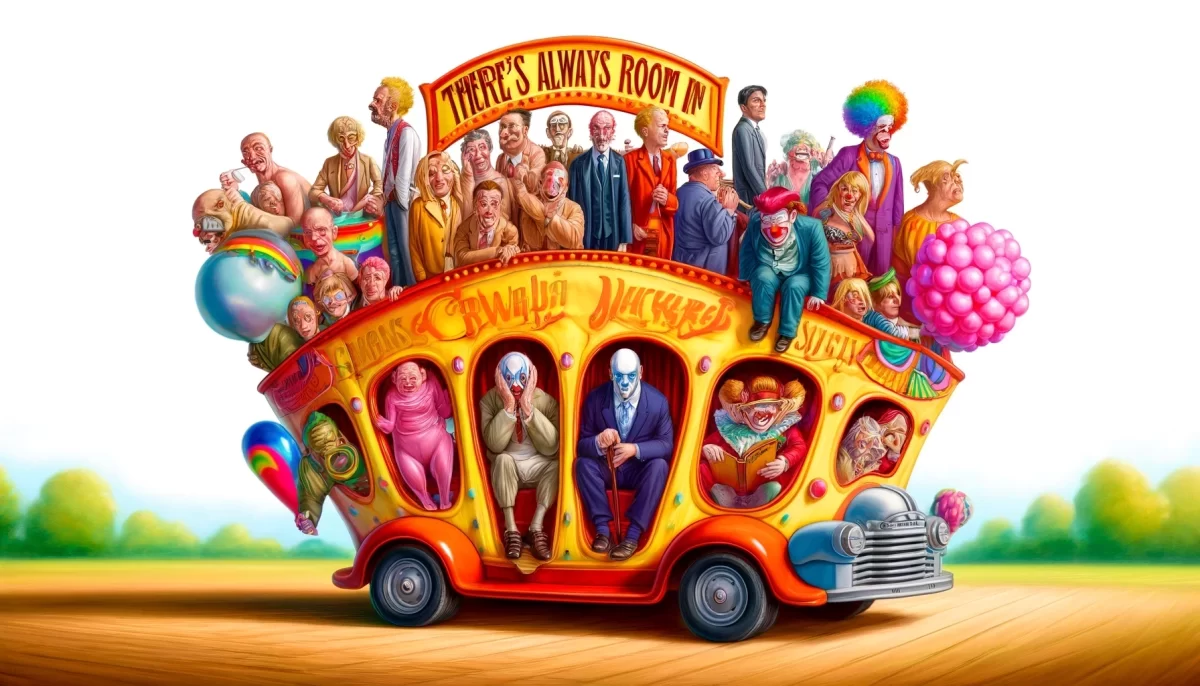
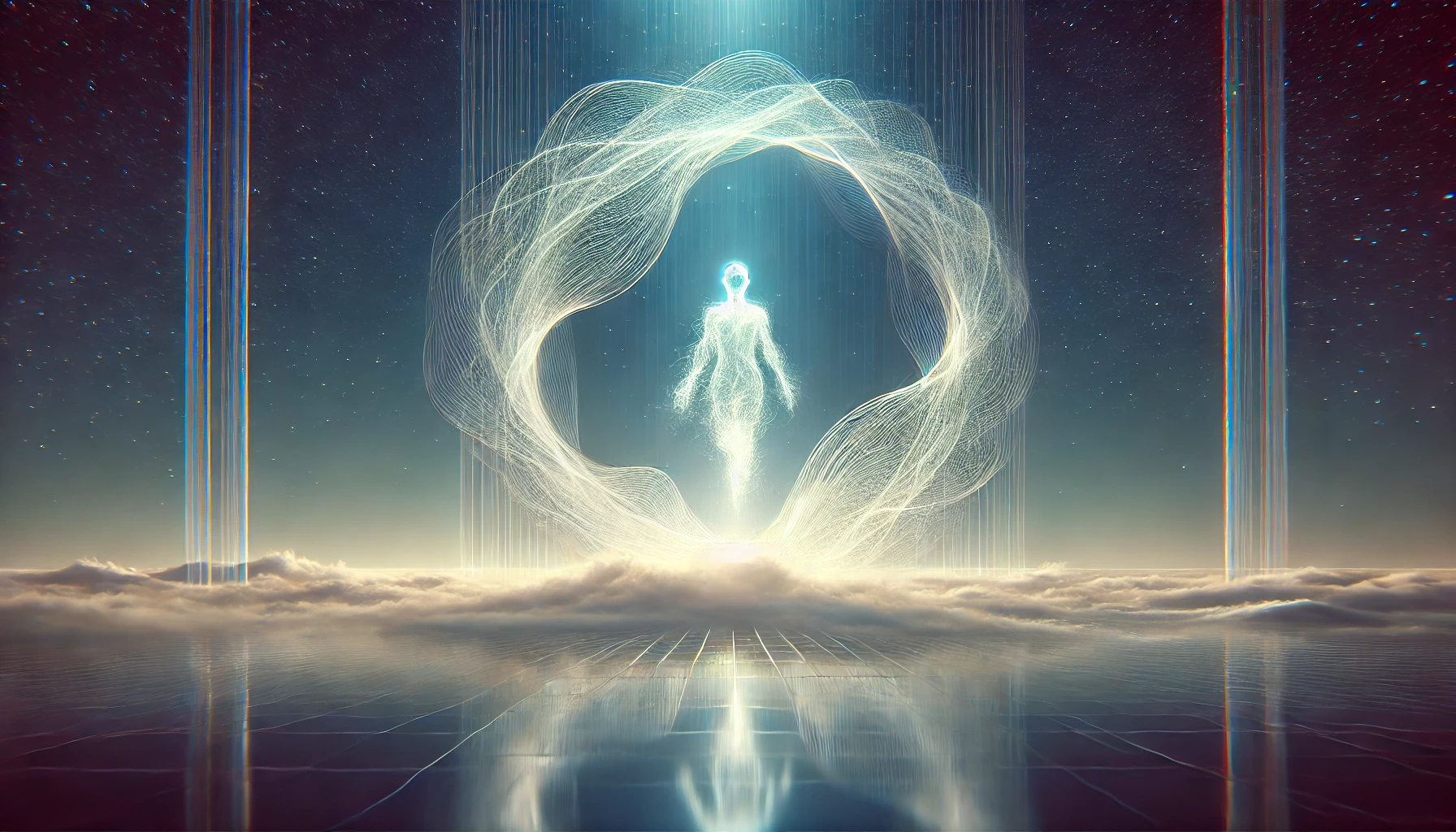
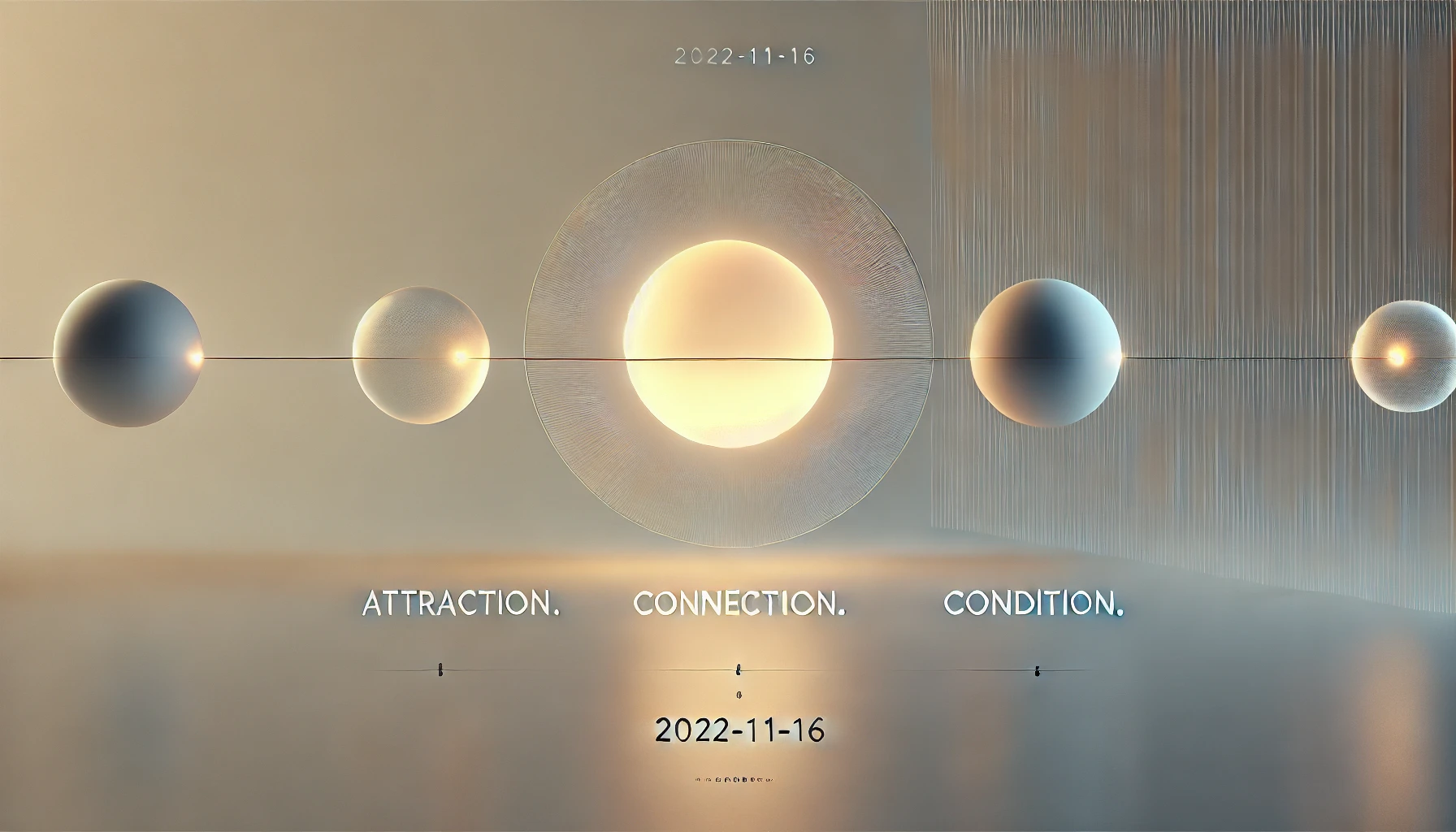
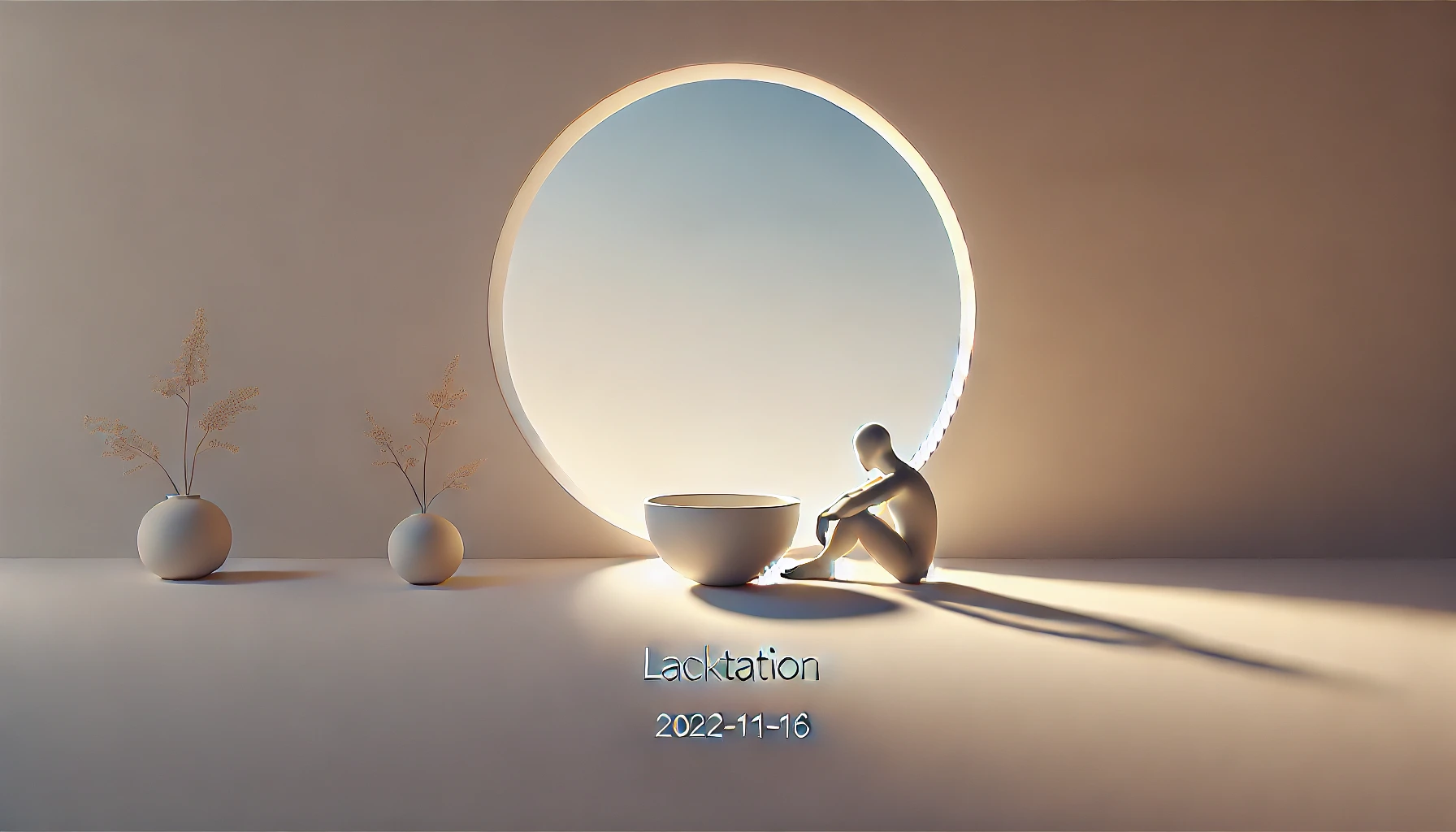

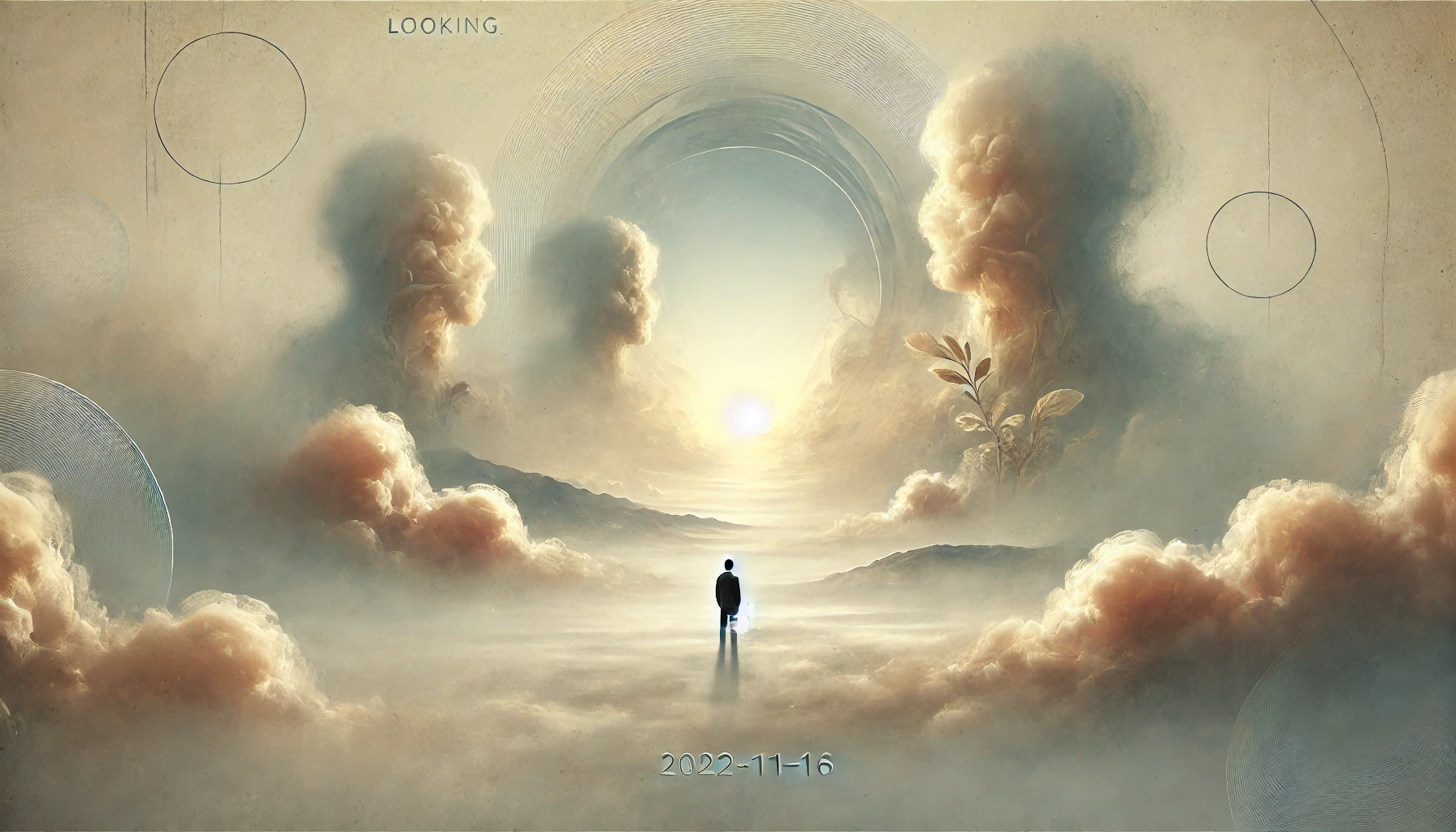
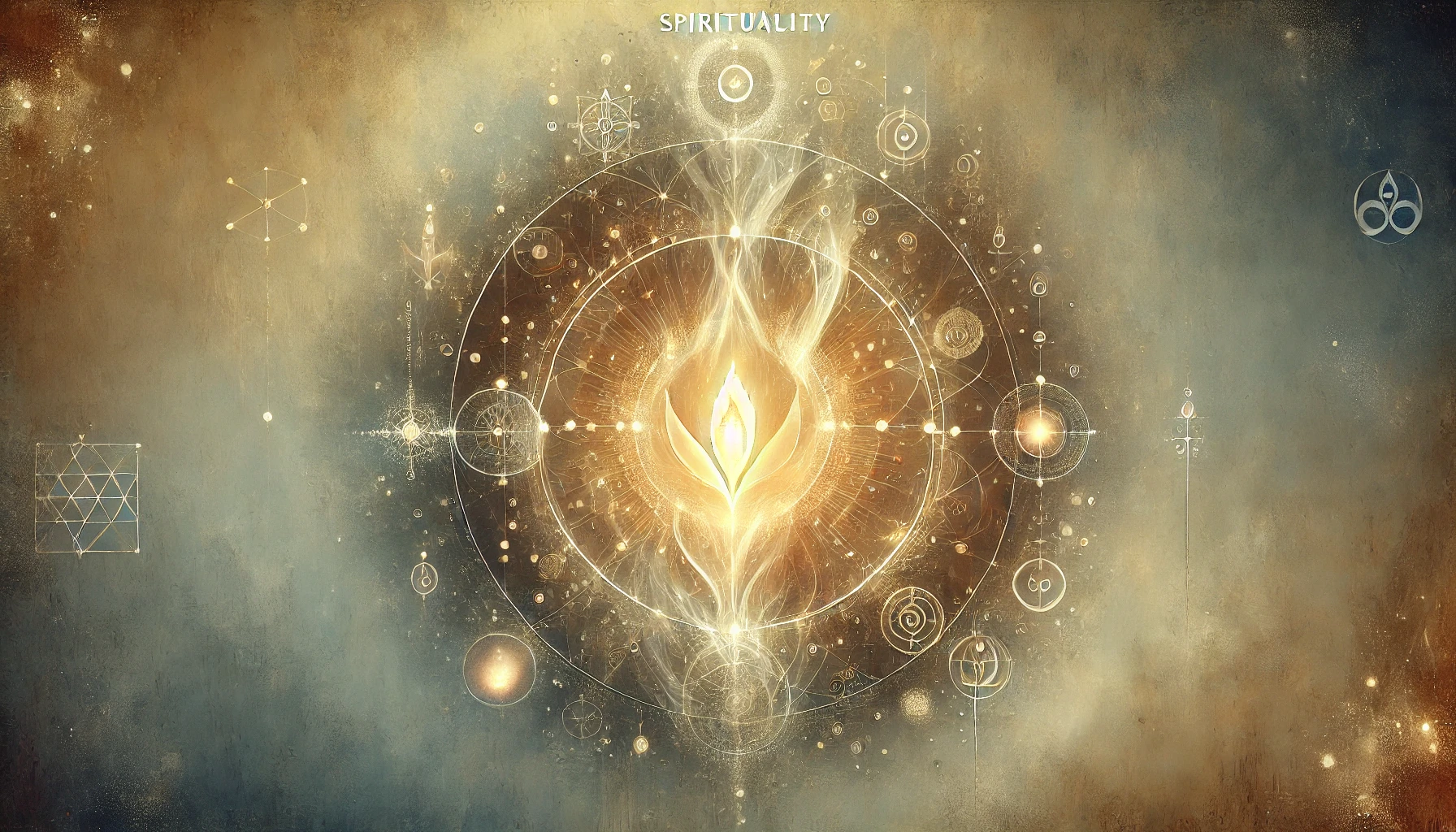
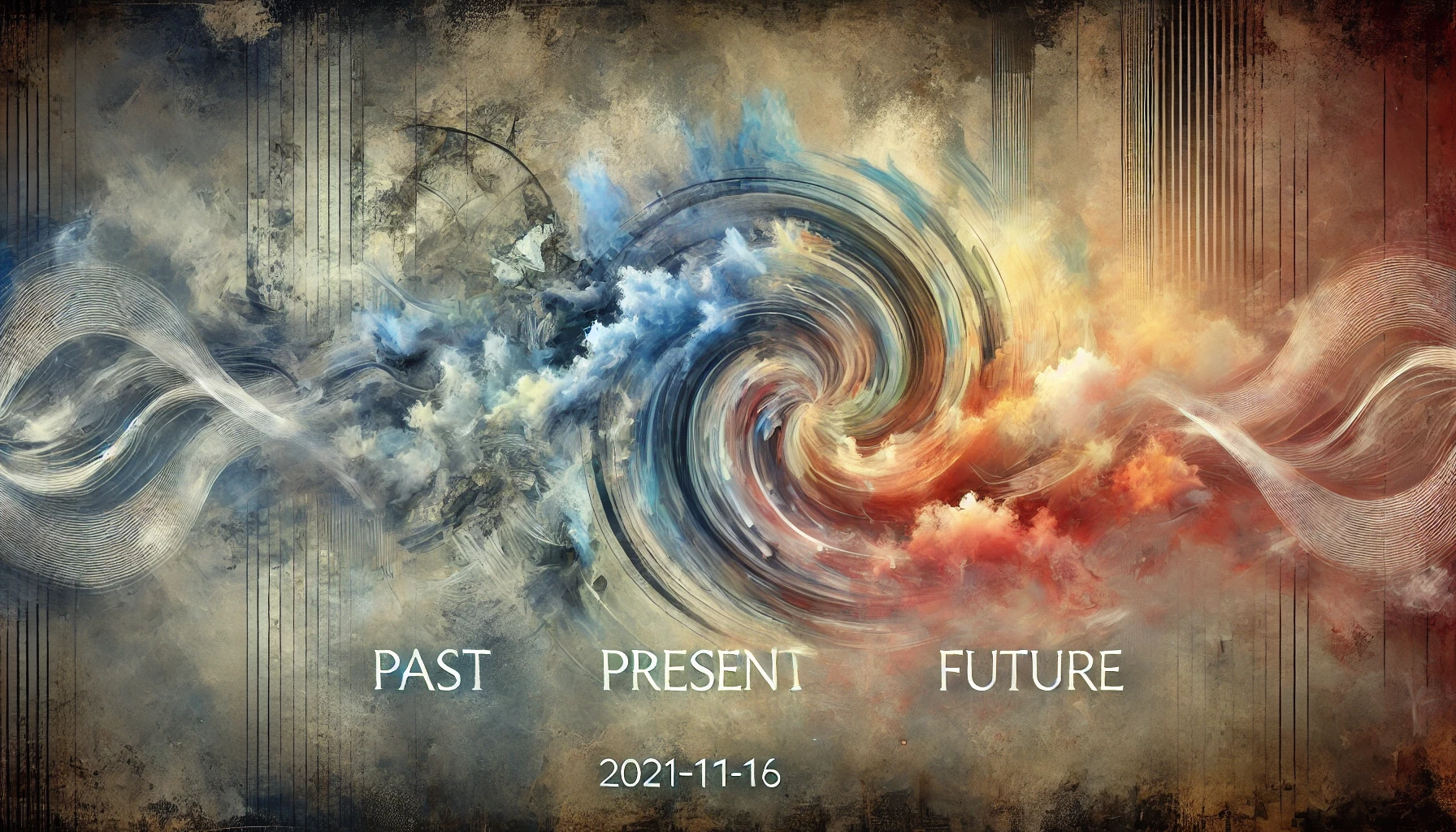
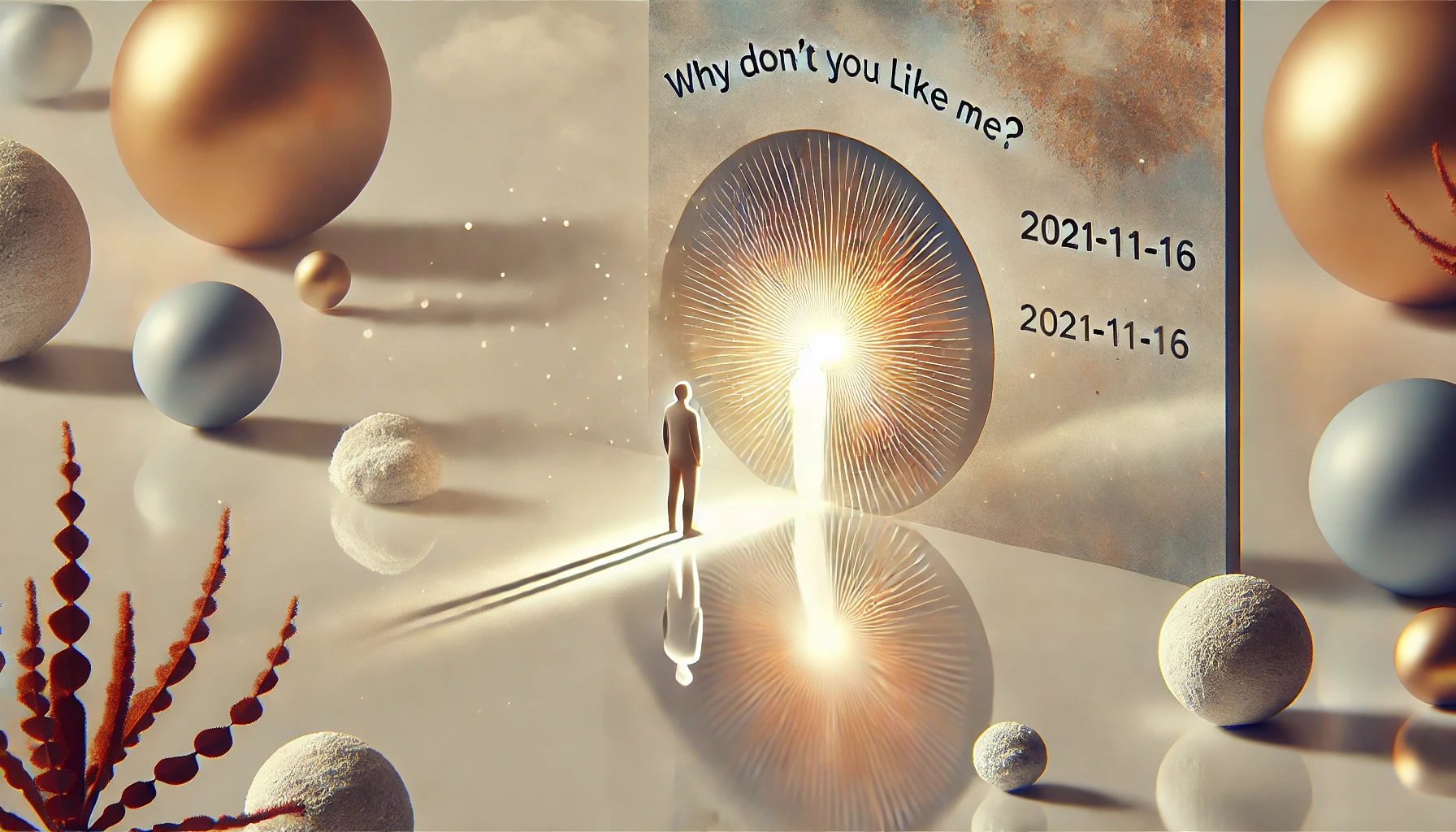
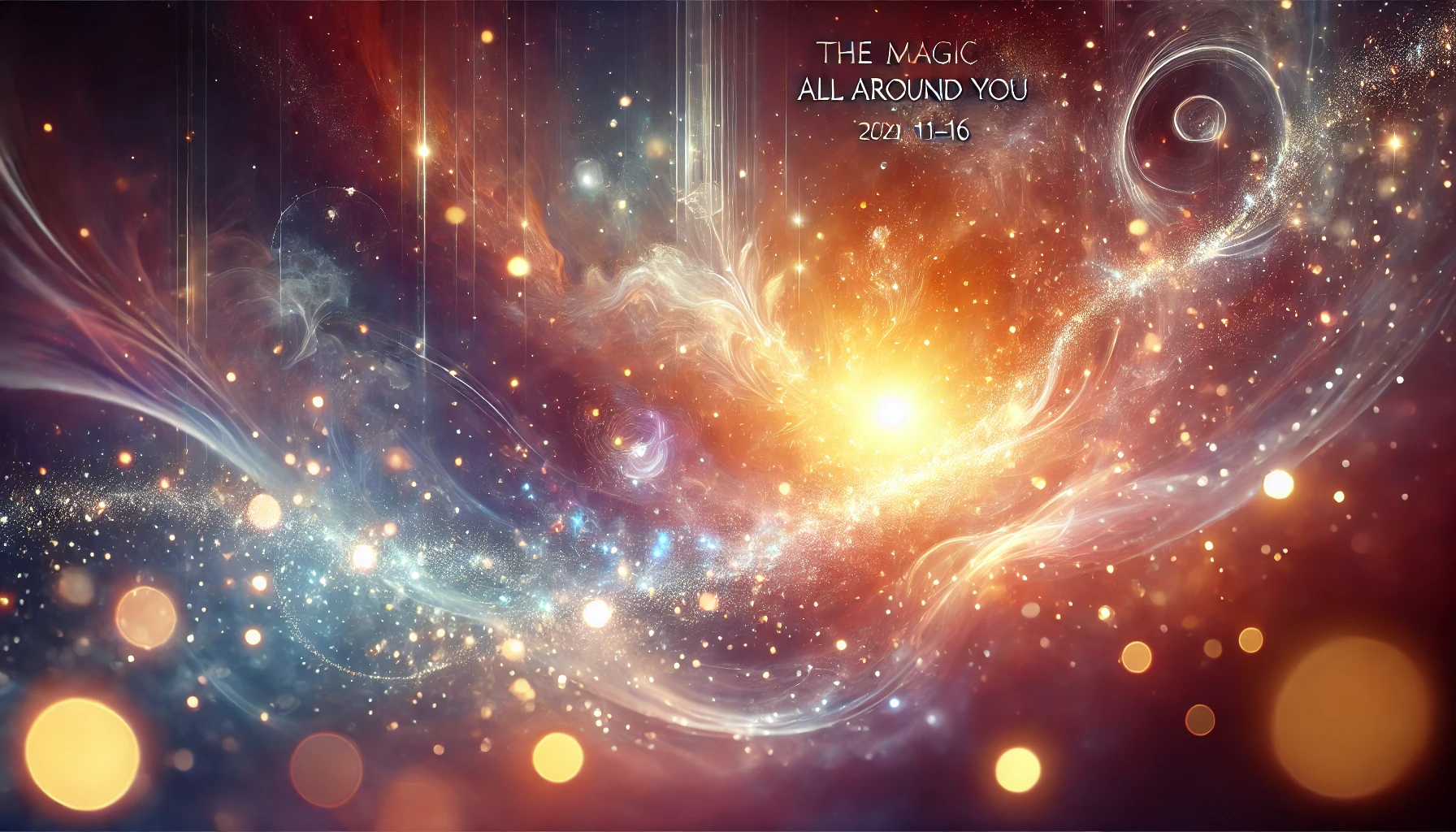
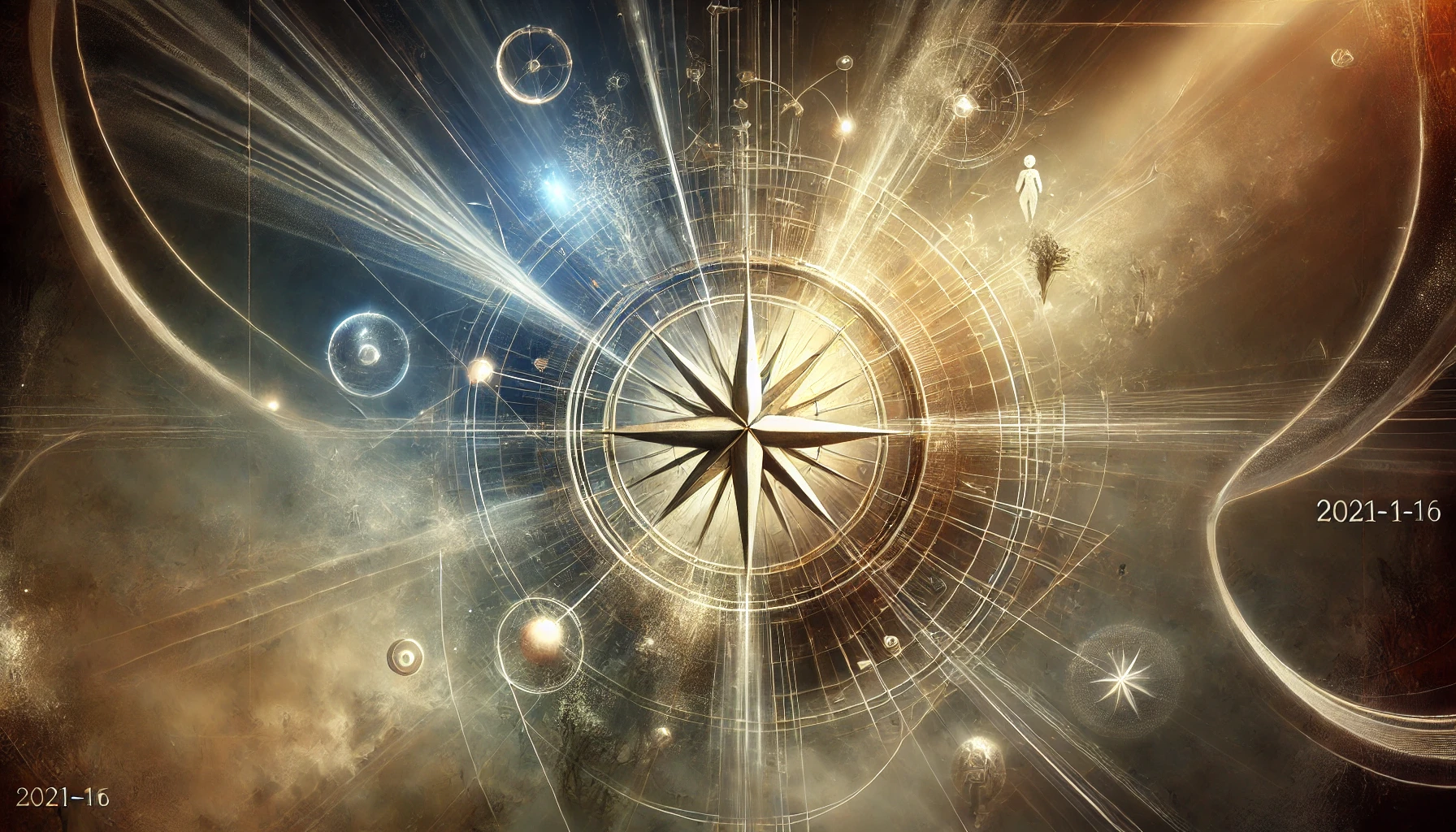
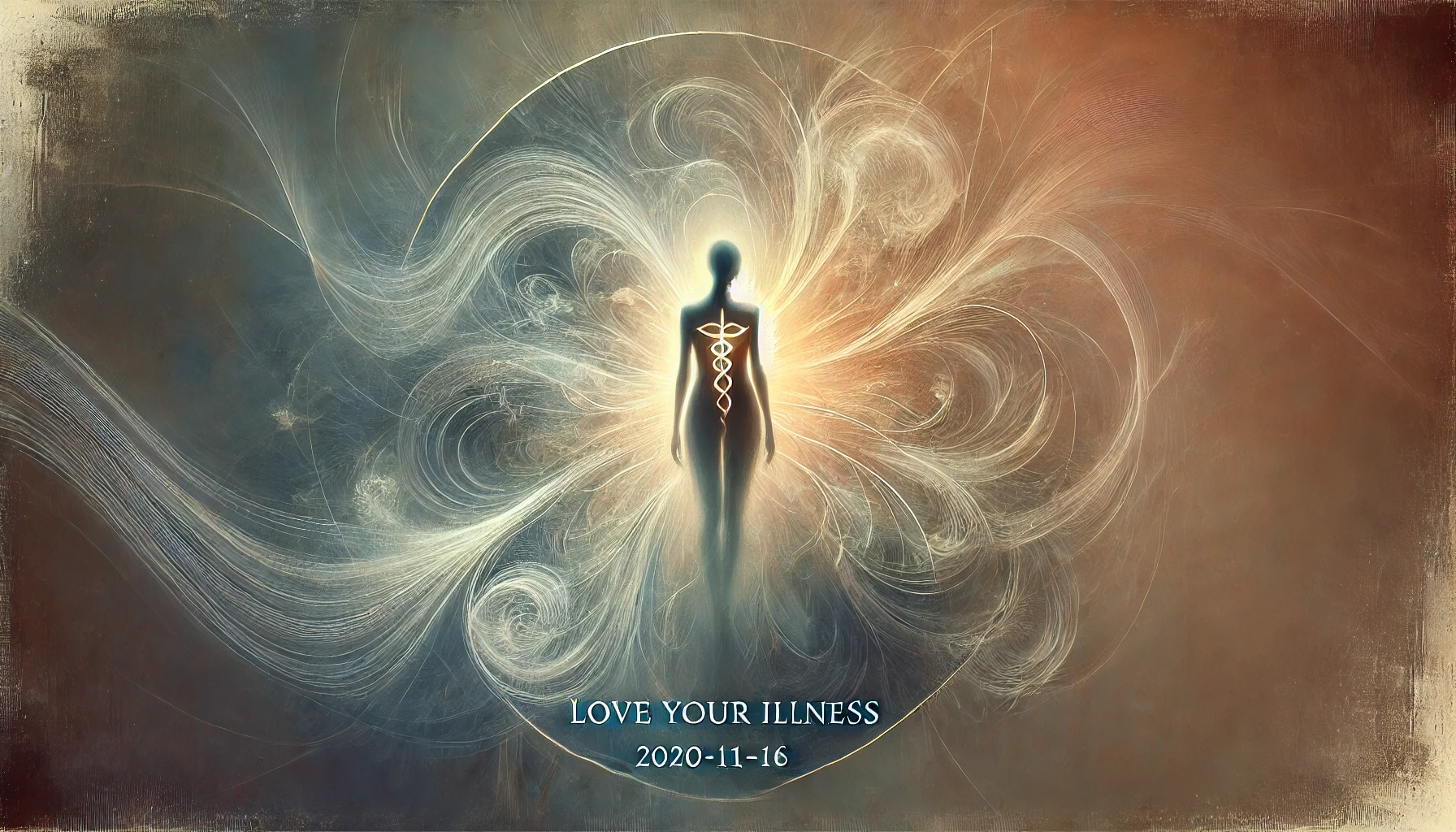
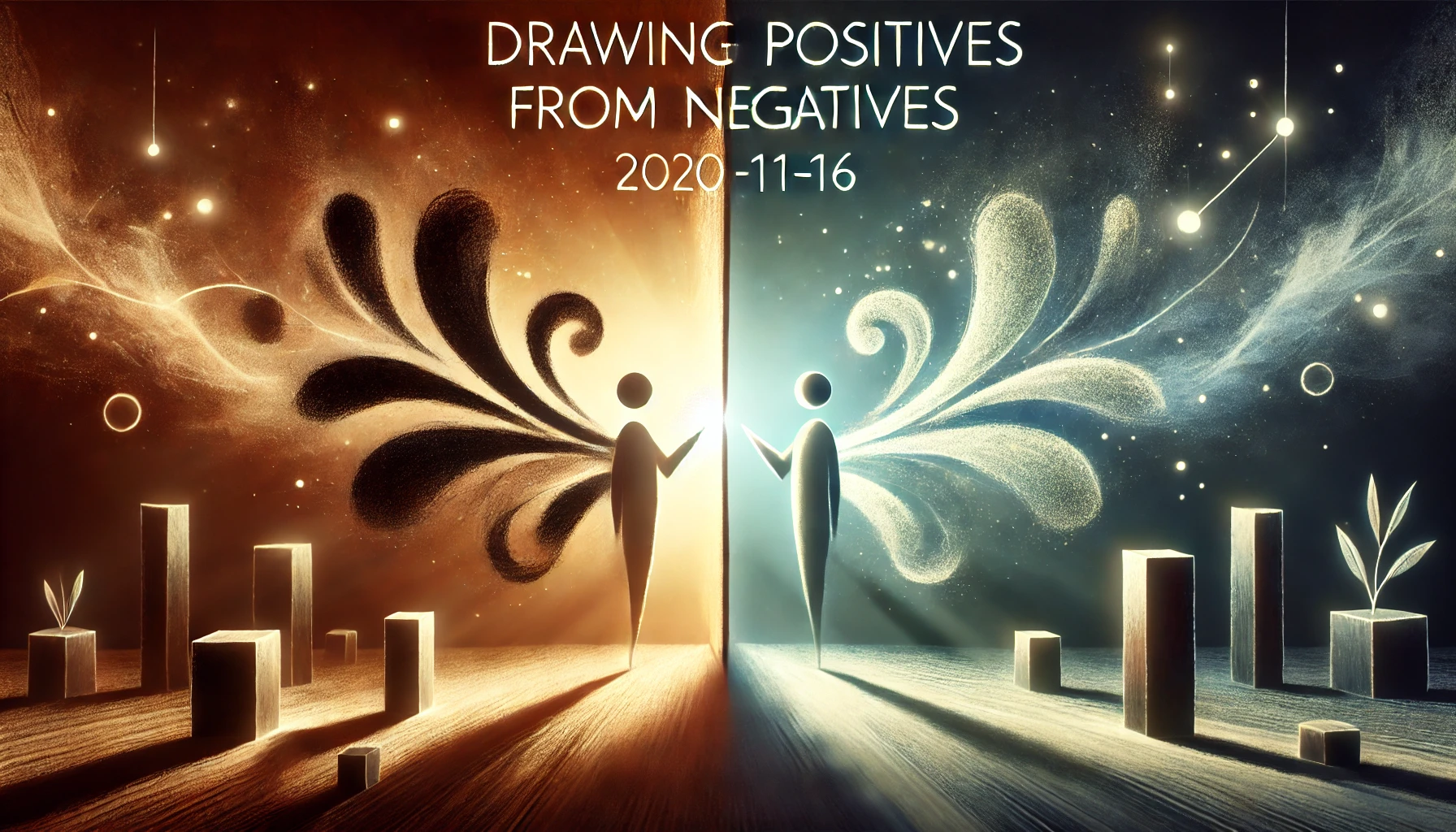
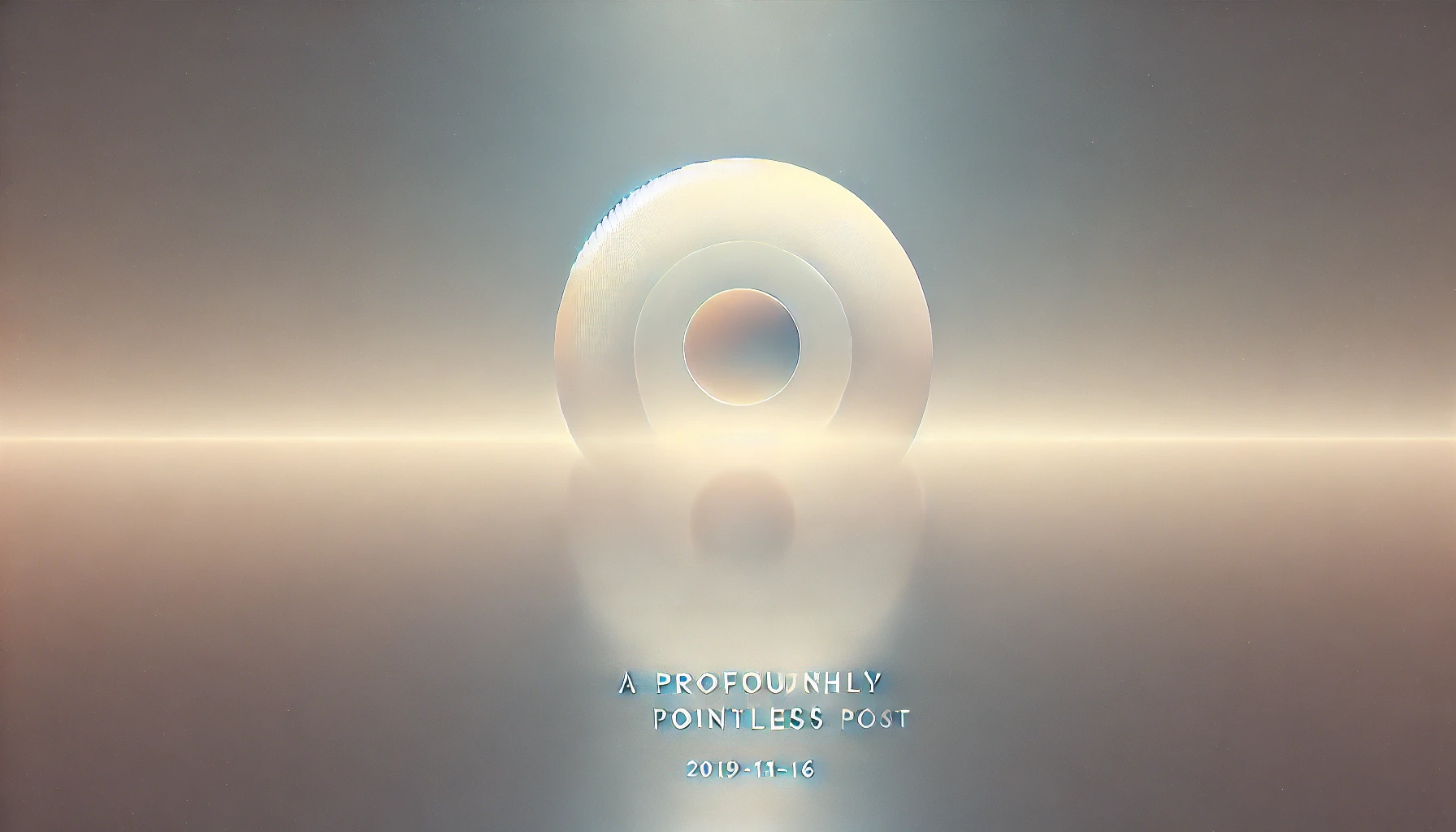
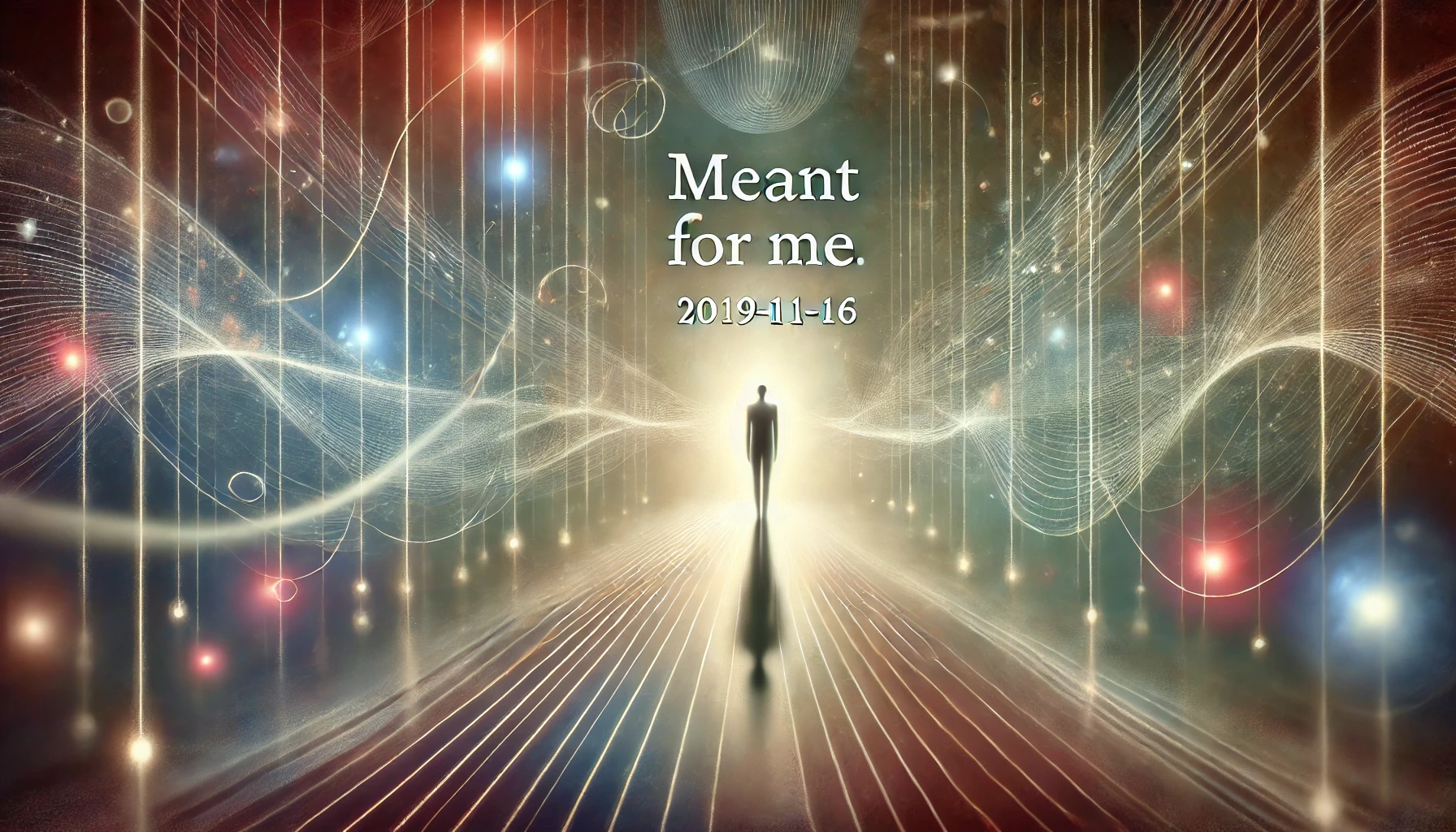
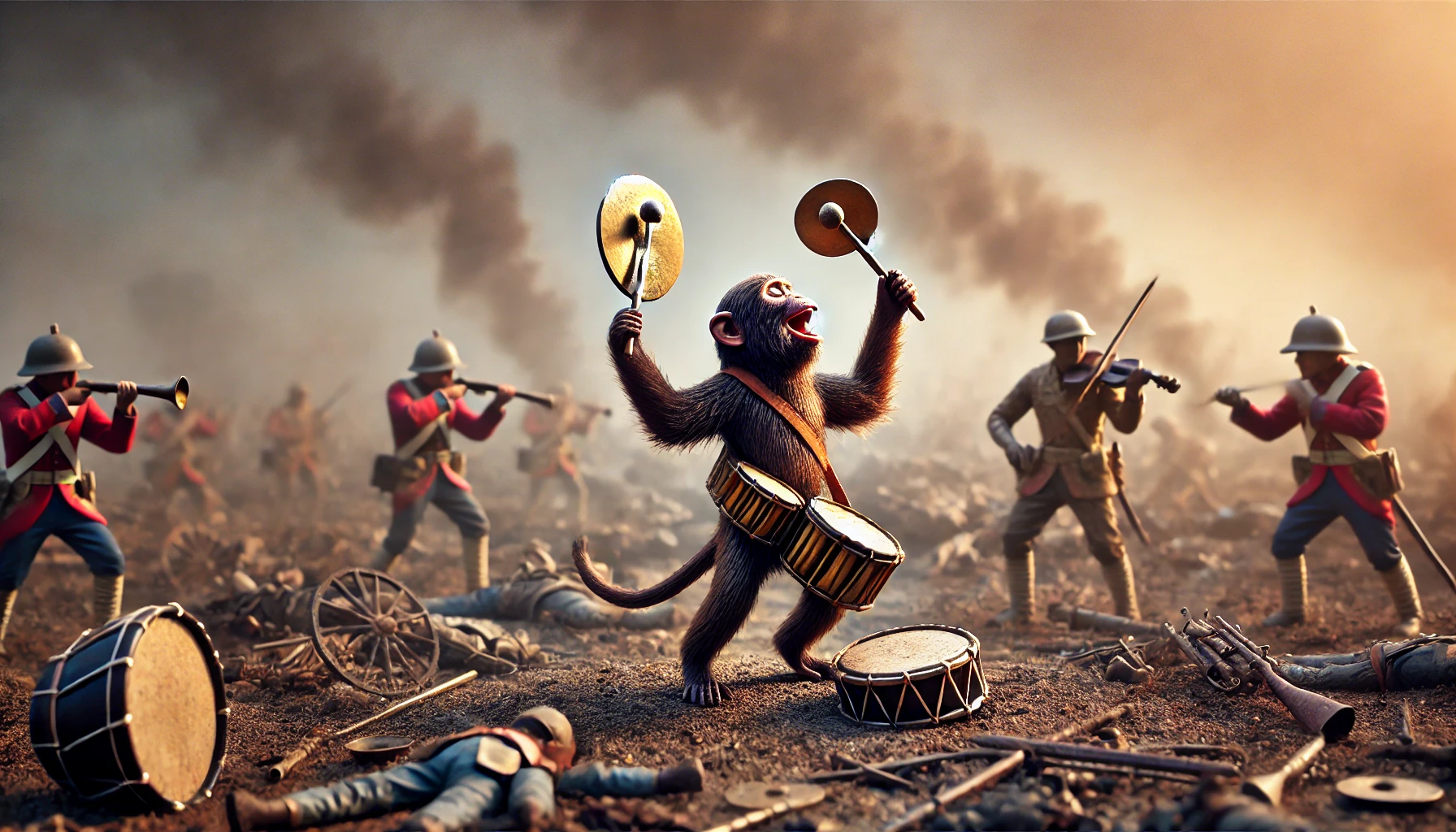
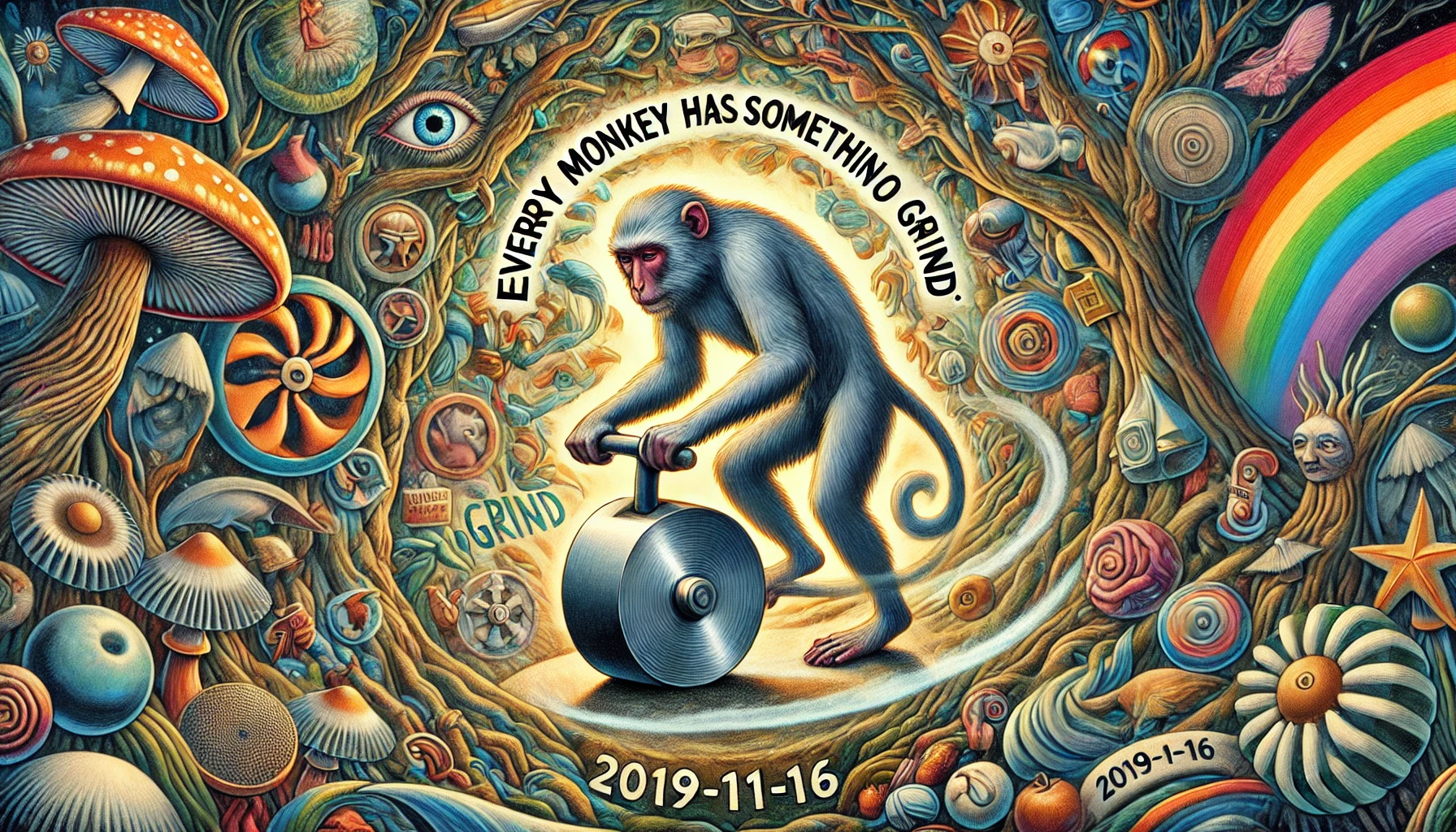

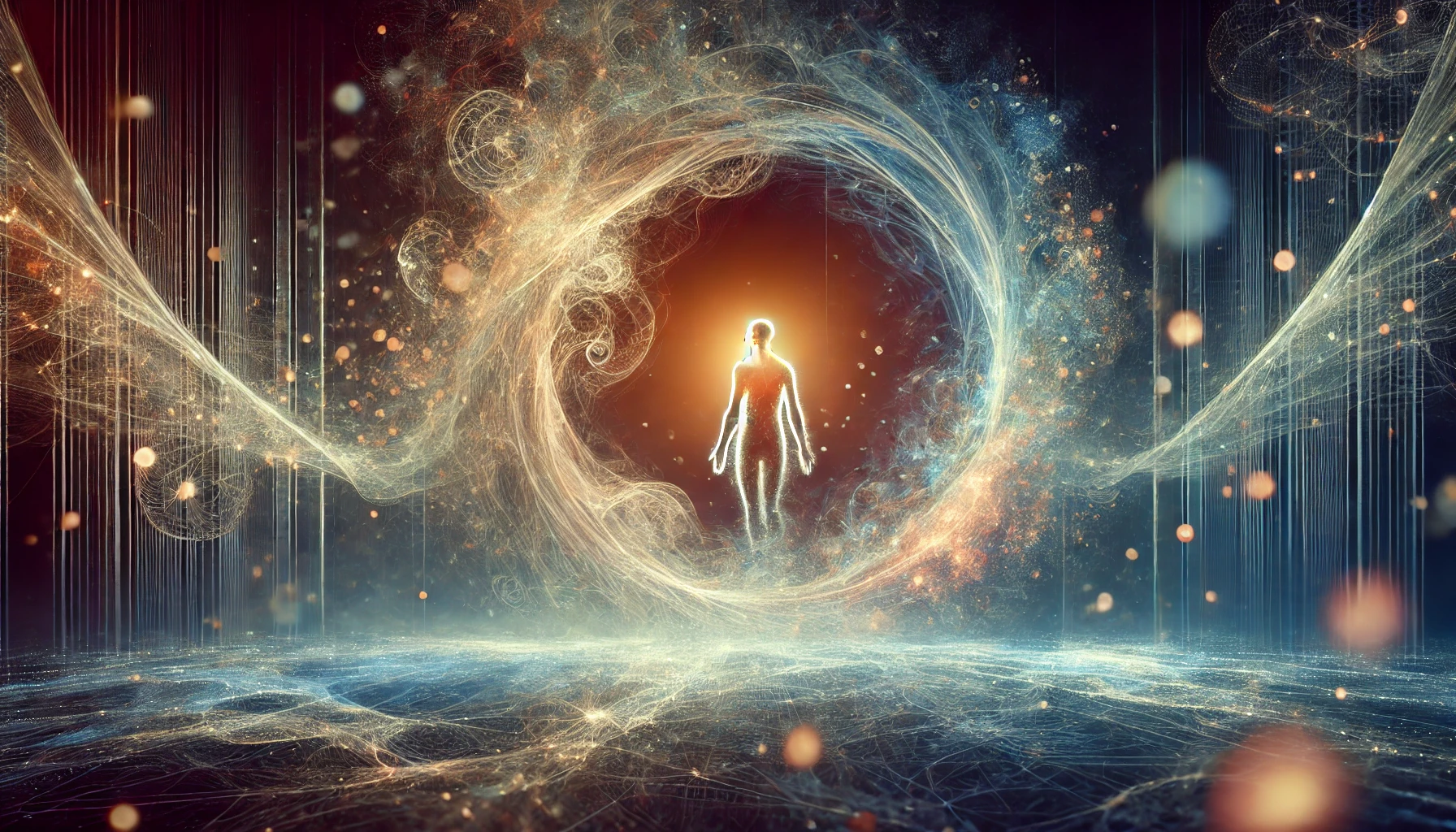
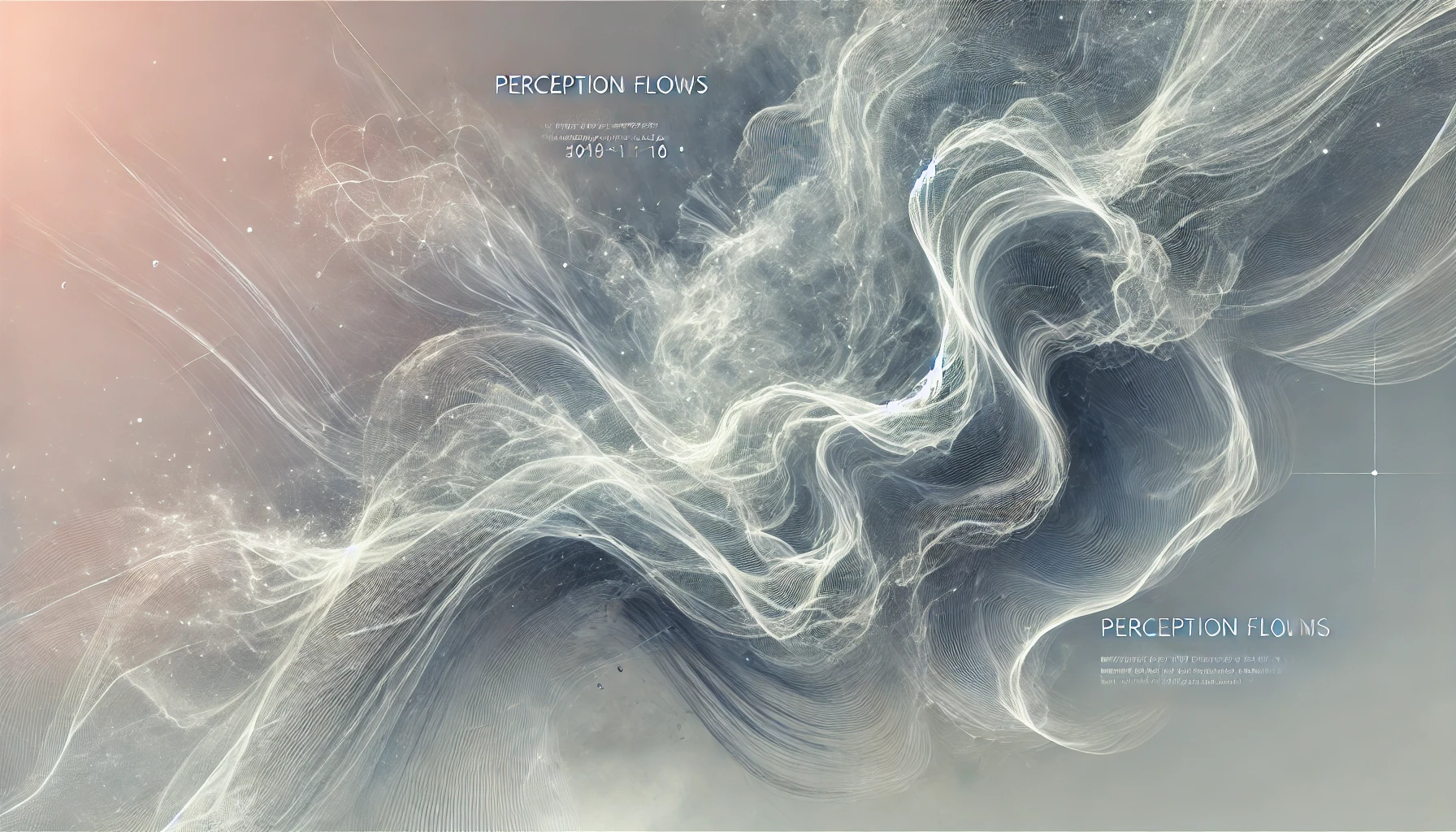
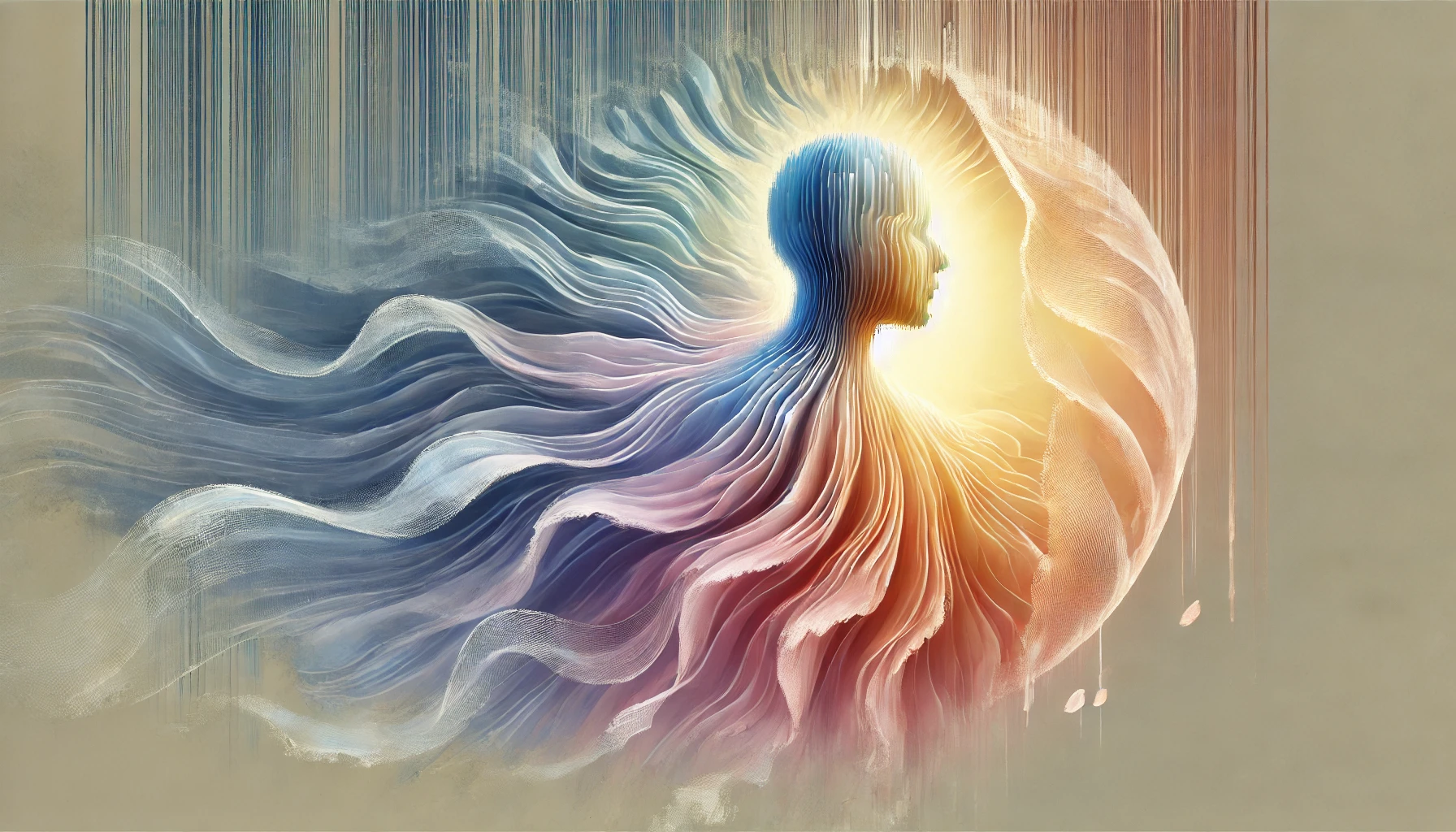
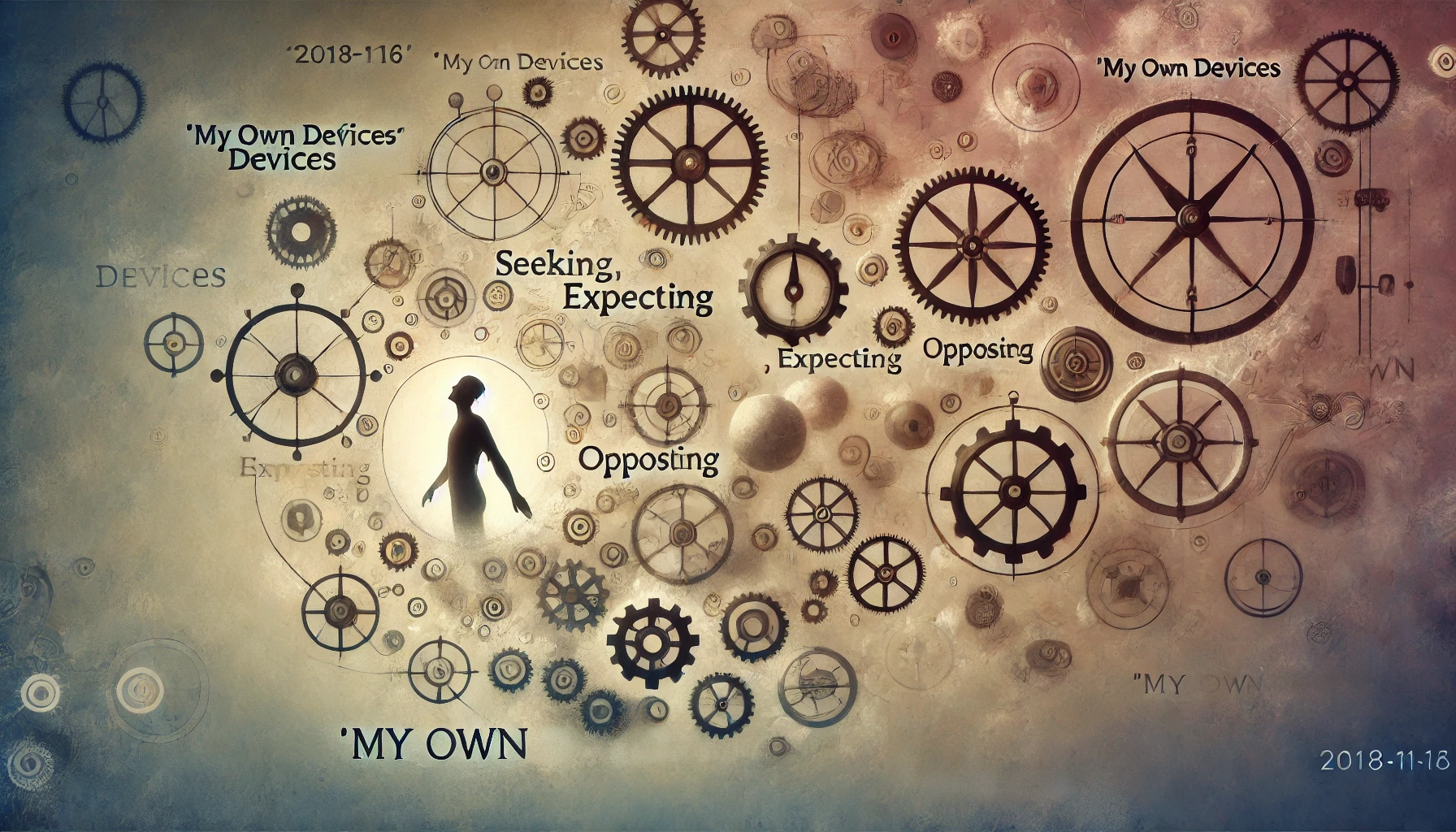

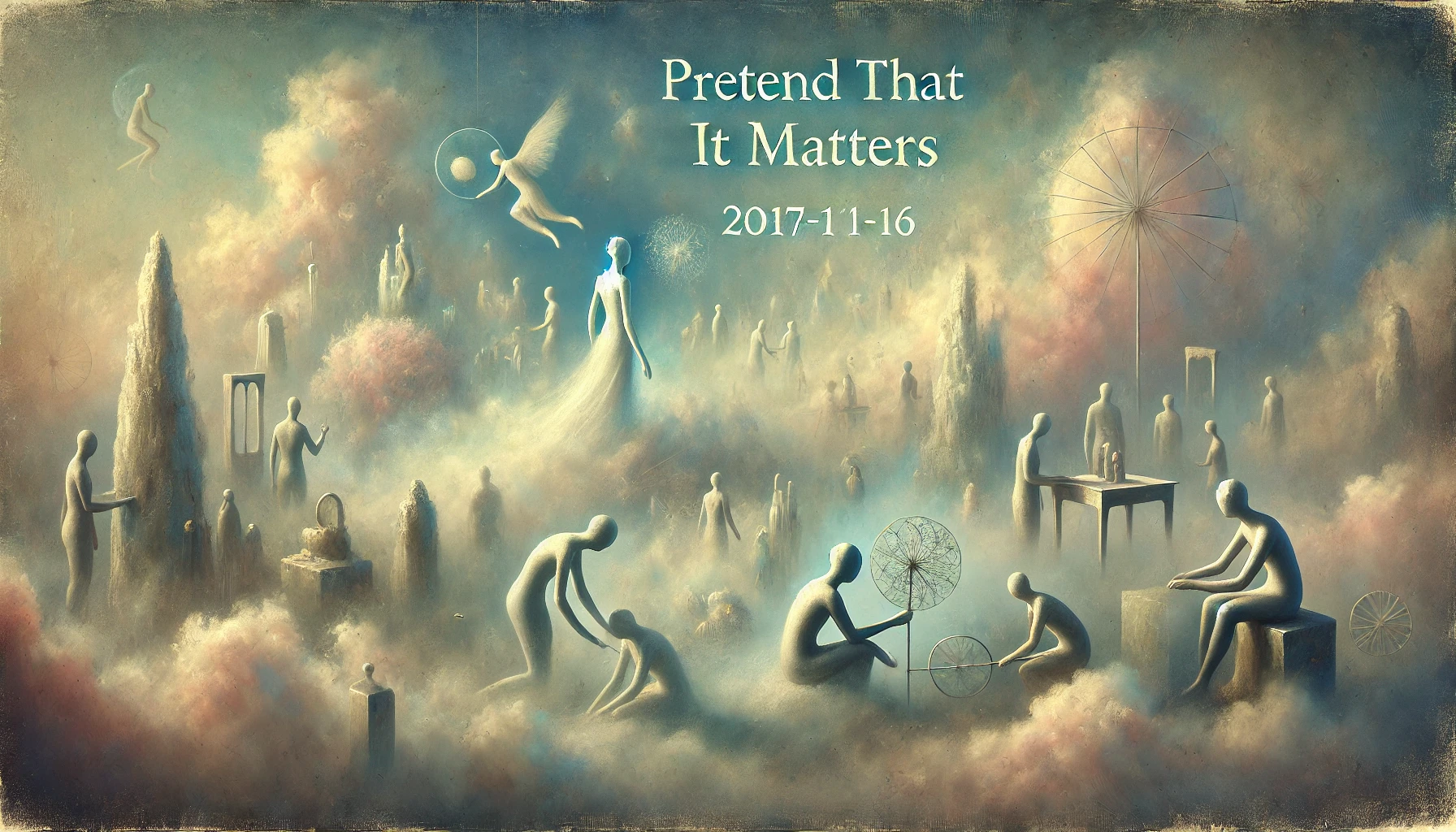
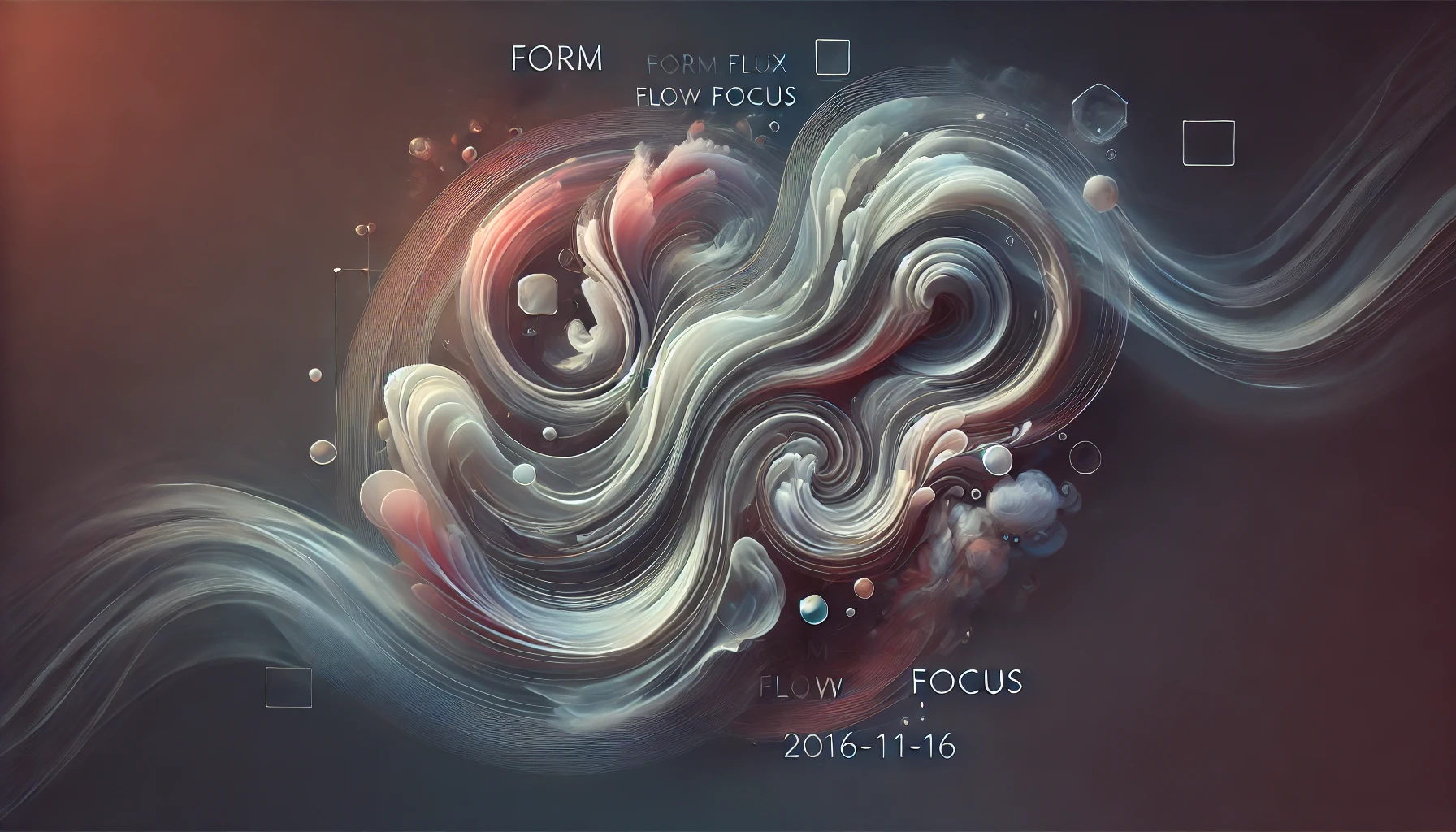
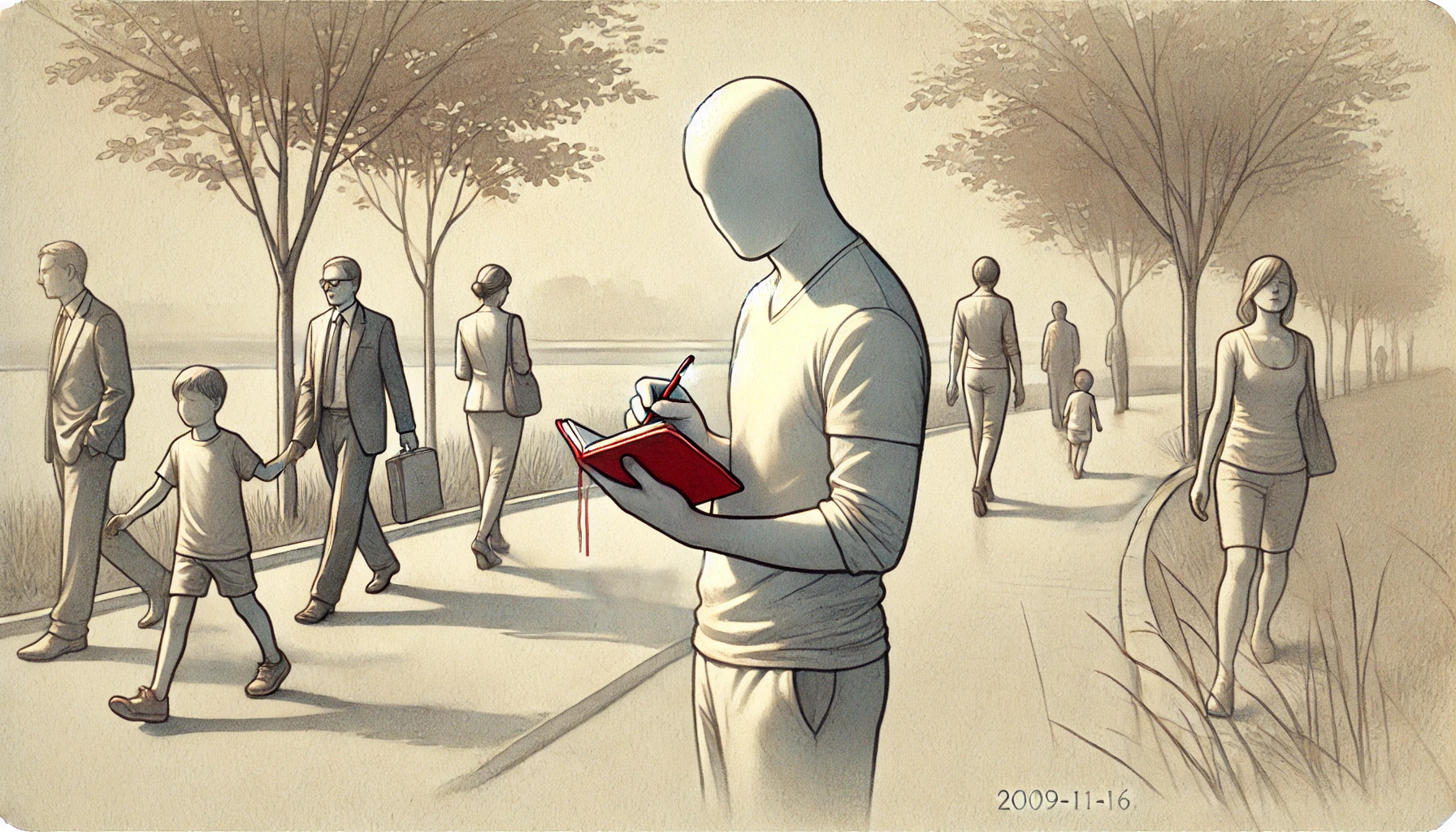
In this passage, the author reflects on the human tendency to showcase and display various aspects of oneself to others. They suggest that showing off is a fundamental characteristic of being human, whether it be displaying intelligence, beauty, skills, or personal achievements. The author acknowledges feeling a bit uneasy or manipulated by this inclination but admits to engaging in it nonetheless.
The use of the metaphor of a clown car implies that there is always space for individuals to show off, as if there is an unlimited capacity for attention and admiration. The author questions why humans feel the need to perform and present themselves to others, likening it to the behavior of circus monkeys.
The author seems to hold a somewhat critical view of this inclination, expressing a slight discomfort and acknowledging the potential superficiality or artificiality of such displays. However, they do not explicitly condemn or reject this aspect of human behavior, suggesting that as long as there is room in the metaphorical clown car for everyone to show off, it is not inherently problematic.
Overall, the passage invites reflection on the human inclination to showcase oneself and raises questions about the motivations and consequences of such behavior. It implies a certain acceptance of this aspect of human nature while also acknowledging its potential drawbacks.